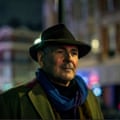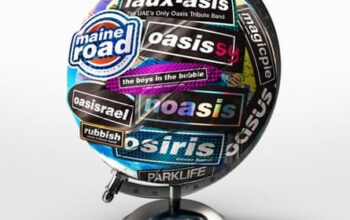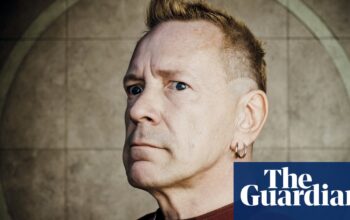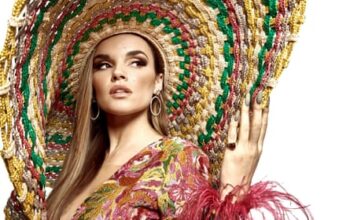I only have two of my pictures up at home – and this one lives in the bathroom. It was commissioned by The Face and was among the first documentary photographs I had published. In the 1990s, everyone wanted to work for The Face. My first assignment was shooting neo-Nazis in Rome. It only took 15 years of work for me to become an overnight success. After that, I suggested a story on travellers.
It was 1992 and the Tories’ Criminal Justice Bill was due to give police new powers to stop the movement of travellers, taking away some of their rights to authorised sites. Myself and the writer Amy Raphael went off in search of travellers – and ended up at Glastonbury, where this photograph was taken. I’d had too much to smoke and was lying on the ground with my Leica when I saw the Bubbleman – and a naked bloke who came along and started playing with the bubbles. As I pressed the shutter, the bubble burst and I thought: “Shit, I didn’t get it!” But when I saw the contact sheet, there it was, the very last frame – with the material covering his willy.
The Bubbleman picture was a pivotal one for me. Around the same time, I’d done an Ally Capellino catalogue that had made a splash in the fashion world. It was documentary style, with loads of people on the beach in Margate. For a time, I was set, but these things never last. In 1997, I stopped doing fashion. I had split up with my girlfriend, who was a model, and I just couldn’t do fashion any more. Then Elle sent me to shoot pictures for a “night out with a geezer” feature. I ended up in the St Moritz bar in Soho, London, drinking with one of the “dodgy characters”, talking about our our fathers. We bonded. It got me out of my misery and started me on a new project. I spent the next five years shooting The Firm: photographs of the British underworld. The book came out in 2001.
My adopted dad died when I was a baby and I was brought up by four wonderful women. My birth father was an aristocrat and photographer’s assistant, my birth mother a model. Anyone who’s got a singular background tends to hide away and a Rolleiflex camera will conceal just about your entire face as you shoot. It’s why I’m a photographer.
I enjoy the traditional aspect of composing a picture. After a while, you learn where to stand and how to avoid telegraph poles coming out of people’s heads. I was blown away by the perfect composition of the old masters like Jacques-Henri Lartigue, and Henri Cartier-Bresson who said “sharpness is a bourgeois concept” – only an old Frenchman could say that! My bible was Mary Ellen Mark’s Falkland Road: Prostitutes of Bombay, which I bought for £4.95 in WH Smith in 1979. It inspired me, the idea of this young woman among strangers, highlighting a horrible situation with real sympathy.
At the moment, I am putting together pictures I have taken over the last 25 years. I also want to honour the four women who raised me, and my mother, as well as my lifelong muses and friends. To me, photography is like that moment when you’re a child, looking at the night sky. Someone explains infinity to you and you go: “Oh my god!” It’s magical. When I take pictures now I still feel like a child, looking up at the night sky saying: “Wow!”
Jocelyn Bain Hogg’s CV

Born: London 1962.
Trained: Newport Art College 1982-84.
Influences: “Powell and Pressburger, Jacques-Henri Lartigue.”
High point: “Garnering recognition for a difficult and personal body of work, The Firm, which kickstarted my career in documentary photography.”
Low point: “Although I’m incredibly proud of it, I’ve done so much varied and more personal work, but The Firm is what people only seem to want to know me for”
Top tip: “Get a good accountant.”
Source: theguardian.com


